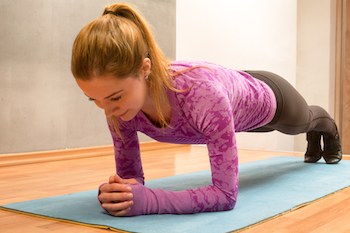Sit-ups are are a component of the current fitness test for all 5 branches of Service, but they are considered a “high-stress” exercise for the spine. The good news is, there are several core-strengthening alternatives to sit-ups that could give you just as much—if not more—fitness bang for your exercise buck and help you improve your sit-up performance.
 Your core muscles are more than just your abs; they include everything “from nipples to knees.” Core muscles are designed to maintain your posture, as opposed to the major muscles that move your body. Effective core training actually requires less movement, less need for sit-ups, and more deep breathing and activation exercises.
Your core muscles are more than just your abs; they include everything “from nipples to knees.” Core muscles are designed to maintain your posture, as opposed to the major muscles that move your body. Effective core training actually requires less movement, less need for sit-ups, and more deep breathing and activation exercises.
Core-activation exercises, such as bridging, planks, squats, and lunges, improve your muscular endurance and better match how your muscles function to stablize your trunk and spine during everyday tasks. As your core stability improves, your body becomes more resilient to fatigue—one reason why these exercises can help improve sit-up performance.
Statistically speaking, a military unit that practices core-stability exercises should have more members who pass the sit-up component of a PT test than those who practice sit-ups. Also, performing core-stability exercises might reduce the number of lost-duty days if you happen to get injured.
Bottom line
Core strength is important for more than just the sit-up part of your PT test. A strong core can improve posture and athletic performance, and help decrease back pain. For more information about core exercise, check out the HPRC article on vertical core training and the peak performance core exercise infographic.




